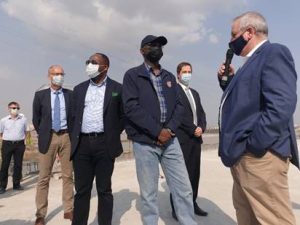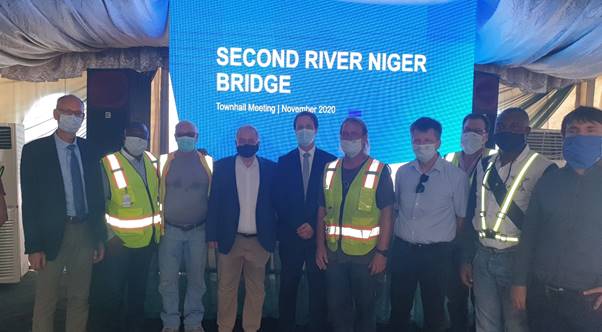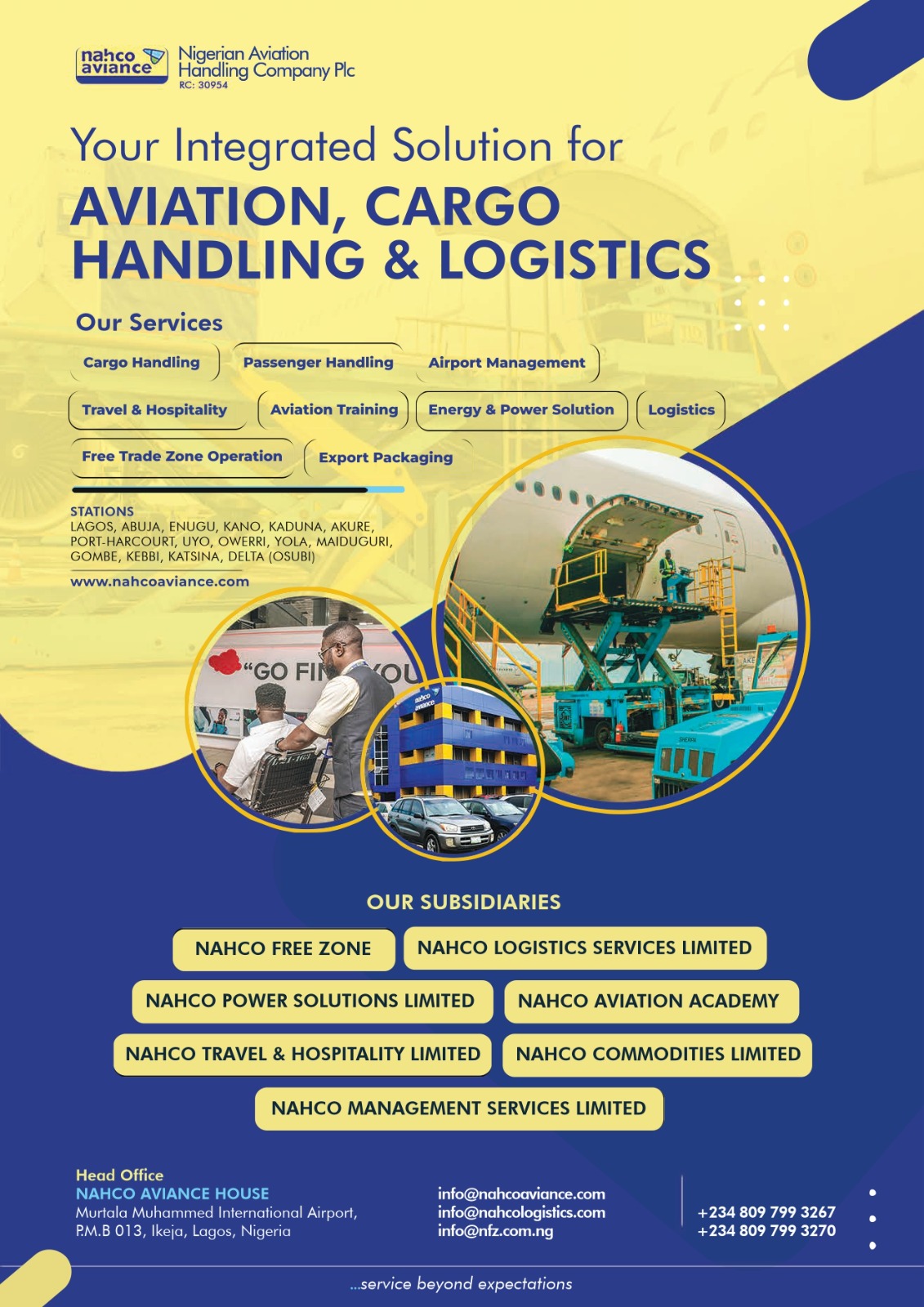President Muhammadu Buhari has endorsed the progress of work being achieved at the Second Niger Bridge saying that, “the project is on course irrespective of initial teething problems that occasioned some loss of time.”
The President communicated his position in Asaba over the weekend at the inspection/town hall meeting on the landmark priority project.
In the same vein, Anambra state governor, Chief Willie Obiano and his Delta state colleague, Dr. Ifeanyi Okowa lauded the project amid expectations of speedy and timely delivery.
The President was represented by Honourable Minister of Works and Housing, Babatunde Fashola, SAN.
Fashola said, “2022 remains the project delivery date. That is the Federal Government’s commitment on the N414 billion Bridge investment by the government. Of this amount, Roads 2a and 2b alone is costing the government N208 billion.”
Fashola revealed that: “the contractor needs about 4 million cubic meters of sand, a lot of supplies of cement, 19 million litres of diesel including local labour to deliver the project,” adding that all of that are already spinning off multiplier economic and commercial activities within the host communities and states.
On compensation to the communities in the project area, Fashola said state governments are in the best position to liaise with communities on behalf of the Federal Ministry of Works and Housing.
For the Anambra state governor, the President, the Federal Ministry of Works and Housing, and Julius Berger Nigeria Plc have remained clearly committed to the project. C
hief Obiano observed, for instance, that: “Covid-19 or no Covid-19, we can all see that the President, the Honourable Minister and his team at the Federal Ministry of Works, and Housing as well as the contractor, Julius Berger Nigeria Plc, have remained committed to the work to deliver the Second Niger Bridge.”
Delta state governor, represented by the Secretary to the State Government, Dr. Chinedu Ebie, thanked President Buhari for “the massive project and the good progress achieved so far on site as we look forward to the successful commissioning in 2022.”
Recalling the rich history of the first Niger Bridge and its significance to commerce and industry in the country, Managing Director of Julius Berger Nigeria Plc, Engr. Lars Richter said that due to population growth in the area, the high rate of urbanisation and the geometric increase in traffic volumes over the years, the need for a complementing bridge arose.
“The second Niger Bridge is part of a new motorway ring which aims to minimise traffic congestion on the old bridge and to strengthen the entire region – it therefore strengthens Nigeria generally and its domestic and international trade routes as well,” Richter said.
Explaining that the project was split into three phases, the Managing Director said, while Phase 1 comprises a 1.6km bridge and 10.3km roads, Phase 2A is a 17.5km Asaba link road and Phase 2B a 17.5km Onitsha link road.
On the progress made so far, the Managing Director said the entire substructure of the Second Niger Bridge is completed while the super structure and finishing works are in progress.
He added that secondary bridges on the main project are also completed. The remaining works which include soil improvement works, culverts and drainage, Owerri interchange, as well as the toll gate, are in progress.
“There is no doubt that upon completion, the Second Niger Bridge will ease traffic flow, improve road safety and create greater opportunities for local residents. It will advance the commercial viability of the immediate area and have a regenerative effect on economic life.”
Richter further said that “the bridge adds a robust artery to Nigeria’s transportation grid, ensuring a solution fit not only for today, but for Nigeria’s tomorrow, because it is being built to cater for the expected growth in traffic over the next 50 years resulting from increased economic activities, population growth and new urban developments.”

Dr. Richter added that, “As a key infrastructure linking the East and the West of the country and a main artery within the Trans-African highway between Lagos and Mombassa, this bridge is a key national infrastructure that will invigorate the South-East of the nation, promoting greater economic growth and boosting of trade and commerce locally for residents, nationally and internationally.”
According to him, the Second Niger Bridge will spur an increase in investments, agriculture and trade, particularly with the Onitsha Main Market in the region, which is a major trading hub and key commercial capital.
The bridge, he emphasised, will allow for improved, more efficient and quicker connection to Lagos, another key commercial hub.
It will surely reduce hardships of commuters, improve traffic flow and road safety, Richter said.
Speaking on the technical challenges involved in the construction of the Second Niger Bridge, Richter said, “the chosen right of way for the project’s adjoining roads was carefully chosen to ensure minimal impact on citizenry and urban development,” adding that, “the construction works have to be achieved on an extremely soft and swampy terrain.”
The Managing Director confidently said Julius Berger has met the identified challenges with strong solutions, taking proper consideration of “the varying water level of the River Niger of up to 12 metre between the dry and rainy seasons”.
This consideration, he added, has further been supported by soil improvement measures “including vertical drainage and horizontal dam base reinforcement, which are implemented to guarantee the load-bearing capacity and to accelerate the settlement of the sand dams.”
The Obi of Onitsha, HRH Agbogidi, Igwe Achebe and other traditional rulers of surrounding communities as well as the Speaker, Anambra House of Assembly, Rt. Hon. Uchenna Okafor and community representatives and the Managing Director of National Sovereign Investment Authority, Uche Orji, graced the event in Asaba last Saturday.













